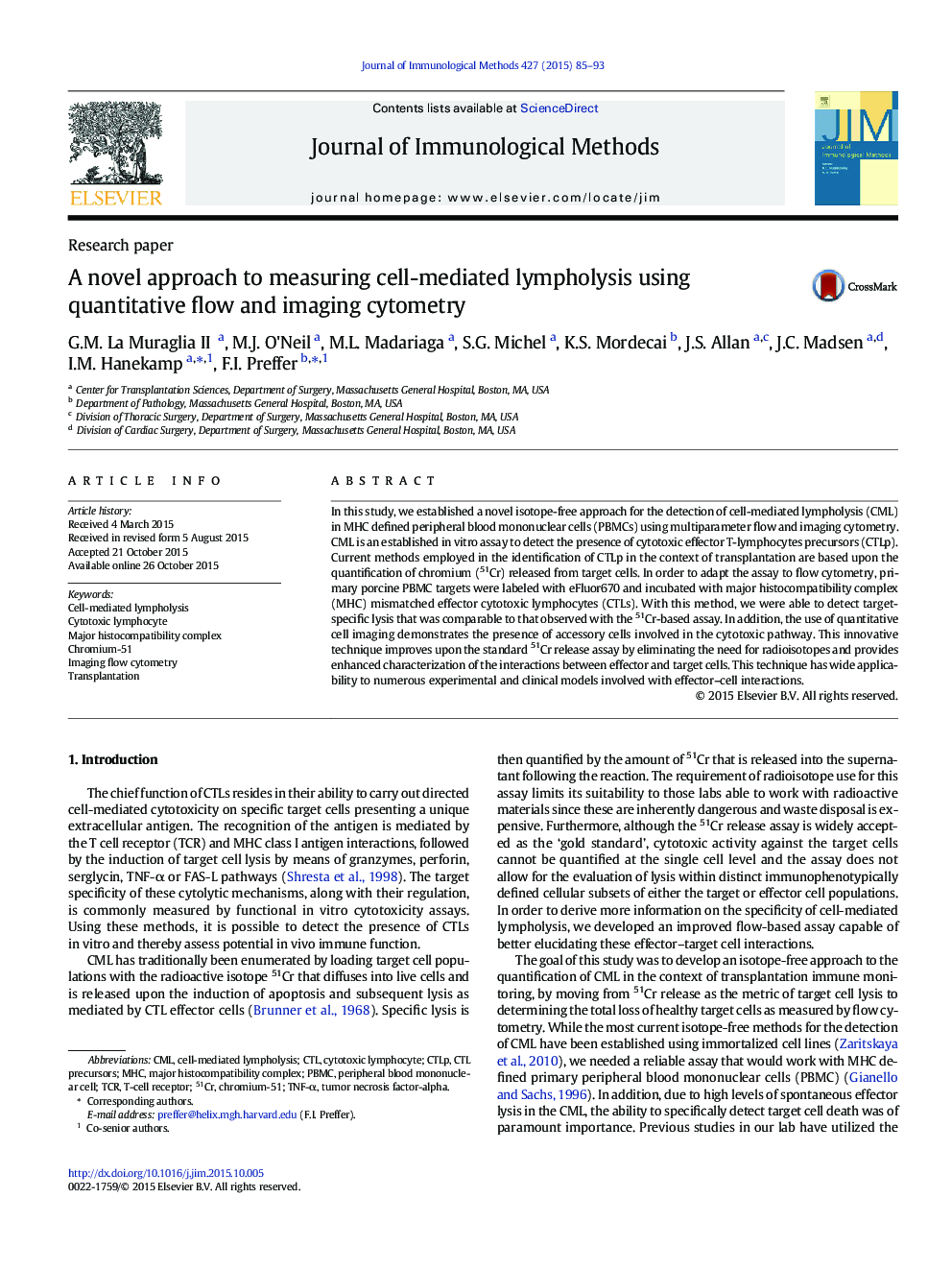| Article ID | Journal | Published Year | Pages | File Type |
|---|---|---|---|---|
| 2088018 | Journal of Immunological Methods | 2015 | 9 Pages |
•The establishment of a flow based CML utilizing primary PBMCs•Provides isotope-free approach to in vitro allo-response monitoring•Ability to phenotypically characterize the effector and target cell populations•Application of imaging cytometry to evaluate effector–target cell interactions•Allows for future studies investigating the mechanism(s) of cell mediated lysis
In this study, we established a novel isotope-free approach for the detection of cell-mediated lympholysis (CML) in MHC defined peripheral blood mononuclear cells (PBMCs) using multiparameter flow and imaging cytometry. CML is an established in vitro assay to detect the presence of cytotoxic effector T-lymphocytes precursors (CTLp). Current methods employed in the identification of CTLp in the context of transplantation are based upon the quantification of chromium (51Cr) released from target cells. In order to adapt the assay to flow cytometry, primary porcine PBMC targets were labeled with eFluor670 and incubated with major histocompatibility complex (MHC) mismatched effector cytotoxic lymphocytes (CTLs). With this method, we were able to detect target-specific lysis that was comparable to that observed with the 51Cr-based assay. In addition, the use of quantitative cell imaging demonstrates the presence of accessory cells involved in the cytotoxic pathway. This innovative technique improves upon the standard 51Cr release assay by eliminating the need for radioisotopes and provides enhanced characterization of the interactions between effector and target cells. This technique has wide applicability to numerous experimental and clinical models involved with effector–cell interactions.
